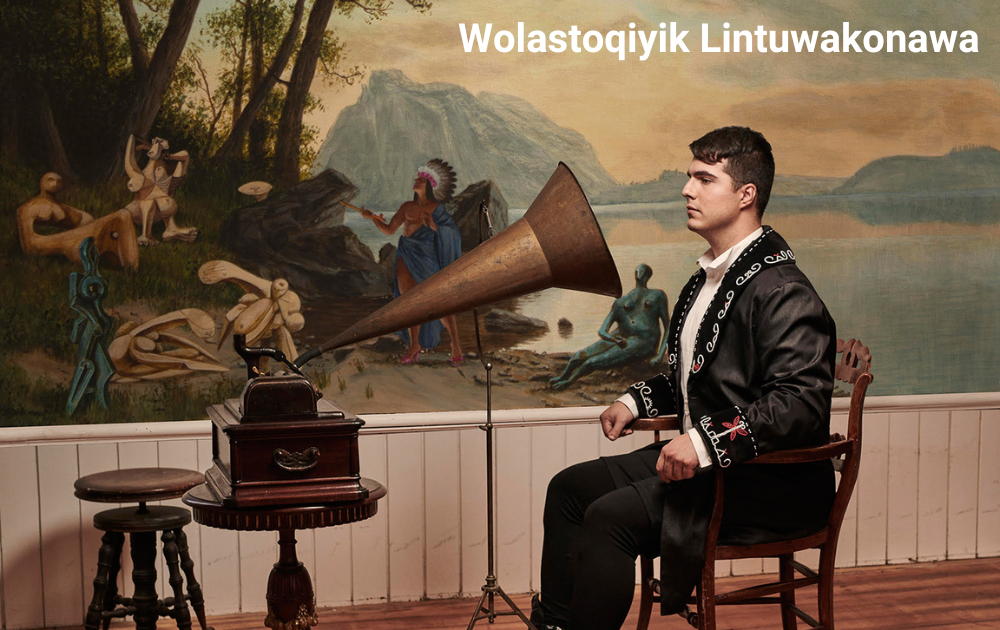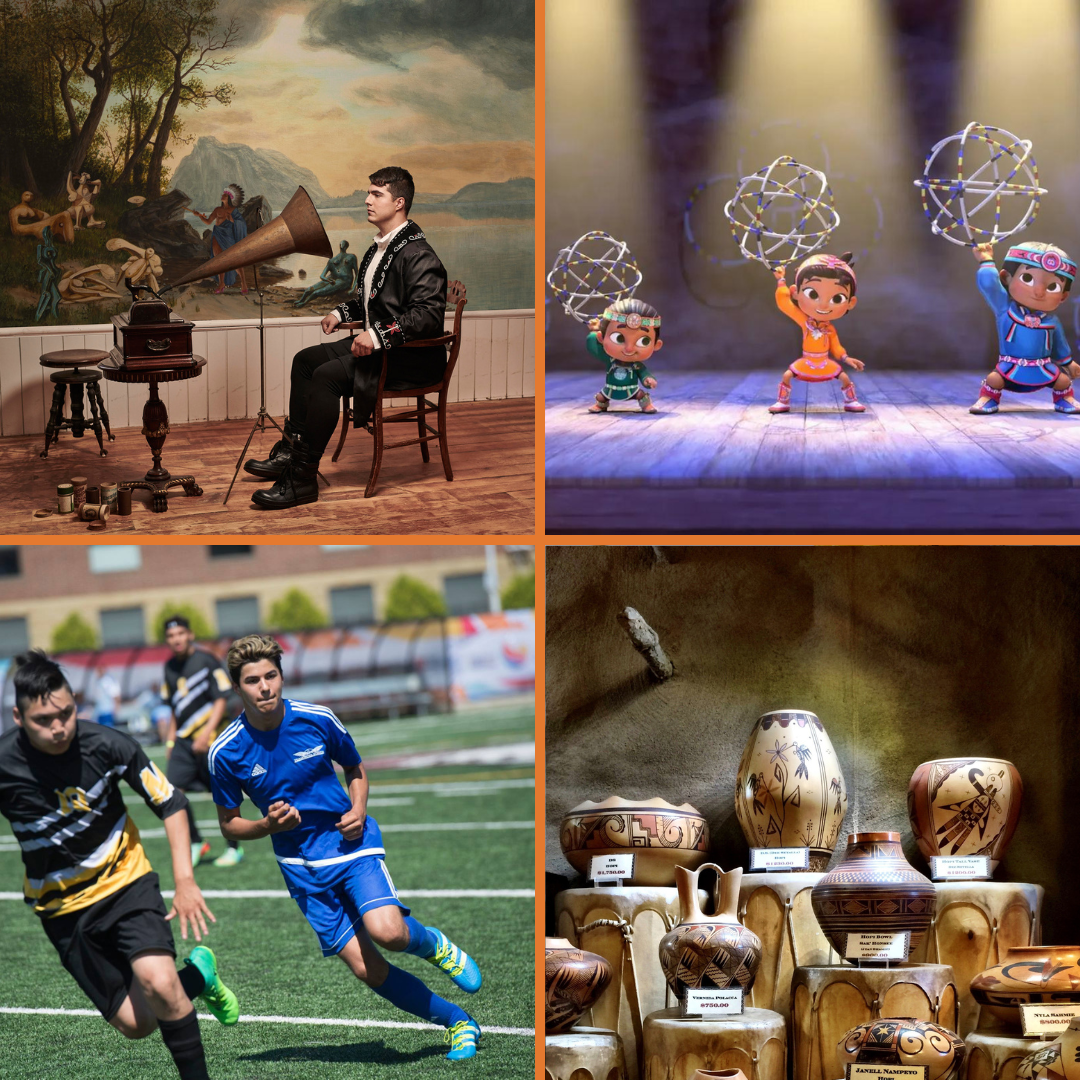By Ali Breen
Land acknowledgments are common on Zoom calls and in board rooms today, and they’re a good starting point on the path to true reconciliation. To celebrate National Indigenous History Month, we’re sharing our story about moving further along that path.
From coast to coast to coast, there are profound, complex Indigenous cultures in this country that deserve to be celebrated, showcased, and understood. We set out to learn about these cultures, and share what we discovered with our community.
In Challenge Factory’s newsletter, The Flip, we started including a simple land acknowledgment in the footer. During events, we also began tying our land acknowledgments to the goals and values of what we had gathered with our community to accomplish.
For example, we reference the dish with one spoon treaty when setting strategy about workspaces in a post-pandemic world. The treaty “draws on the land as a dish to be shared and cared for to ensure ongoing sustenance and life, a metaphor that is part of many Indigenous knowledge systems.” Instead of simply acknowledging the land, we chose action. We started to read and share Indigenous treaties and history.
In our newsletter, we realized we could do more than a footer. Each month, we highlight one action that everyone can take on this path. We’ve collected some of our favourite actions in this blog.
Here are 10 ways you can advance reconciliation, in celebration of National Indigenous History Month and year-round.
1. Let it play: Listen to Indigenous music, knowledge, and perspectives in their language

Musician Jeremy Dutcher transcended time and created collaborative compositions with his Wolastoqiyik ancestors for his Polaris Prize-winning album, Wolastoqiyik Lintuwakonawa. He transcribed Wolastoq songs preserved on wax cylinders and mixed them with his own music, bridging the past and present in song.
“It’s crucial for us to make sure that we’re using our language and passing it on to the next generation,” Dutcher said. “If you lose the language, you’re not just losing words; you’re losing an entire way of seeing and experiencing the world from a distinctly indigenous perspective.”
Listen to the album and read about the album artwork.
2. Change your tune: Learn about the Land Back movement
At the 2023 NBA All-Star game, Canadian musician Jully Black changed one word in our national anthem: “Our home and native land” became “Our home on native land.”
With this intentional choice, Black introduced Indigenous rights and reconciliation, and the Land Back movement, to people who may have never learned about them otherwise. Many people have knee-jerk reactions to changing anthems. That’s what makes this one-word change so powerful—it questions the norms we continue to accept as immovable.
Learn about the Land Back movement and examine your reactions. Here are two resources that encourage understanding and action: Land Back Red Paper (Yellowhead Institute) and What is Land Back? (David Suzuki Foundation).
3. Take a closer look: Explore Two-Eyed Seeing
Maslow’s Hierarchy of Needs is a widely used wellness theory, but few people know it generously borrows from the Indigenous nation of Blackfoot-Siksika. One step we can take towards reconciliation is to use the Indigenous concept of Etuaptmumk—Two-Eyed Seeing—to examine cultural appropriation.
In her TED Talk, Mi’kmaw artist Rebecca Thomas explains that Etuaptmumk encourages us to see “from one eye with the strengths of Indigenous knowledges and ways of knowing, and from the other eye with the strengths of Western knowledges and ways of knowing, learning to use both these eyes together, for the benefit of all.”
Learn more about Maslow’s theory, using Two-Eyed-Seeing as reconciliation in action.
4. Get in the game: Support NAIG

The 2023 North American Indigenous Games (NAIG) will take place in Halifax this summer. Five thousand young athletes from 756 Indigenous nations across North America will gather to “celebrate, share, and reconnect through sport and culture.”
NAIG is sharing educational posts about language, myths, symbols, and more. Follow them on Instagram, LinkedIn, Facebook or Twitter to learn about their distinct cultural foundations. If you live near Kjipuktuk (Halifax), you can also become one of 3,000 volunteers. The games will be held again in future years, moving from region to region across Turtle Island.
5. Take it all in: Find, share, and connect with Indigenous visual arts
Art helps us make meaning of a moment and understand lived experiences that are different from our own. For Indigenous communities, it’s also a path to reconciliation, a protest medium, and a way of reclaiming and sharing culture and land.
Collections are accessible in galleries across Canada. Plan a visit to your local art space. For a virtual experience, the National Film Board of Canada has an extensive collection that showcases the art and the artists themselves.
6. Listen to the elders: Hear first-hand about the history of Indigenous activism
Coffee With My Ma isn’t a new podcast, but its stories will probably be new to you.
This intergenerational podcast is much more than a conversation between mother and daughter. It unearths decades of deeply personal stories from Indigenous activist Kahentinetha Horn. Hosted by her daughter, Canadian actor Kaniehtiio Horn of Letterkenny fame, the stories are sometimes shocking, sometimes funny, and always fascinating.
Check out Kaniehtiio Horn’s CBC interview about the podcast.
7. Throw a watch party: Experience and share Indigenous television

Spirit Rangers is a joyful animated series on Netflix that features Indigenous characters interacting with their natural and spiritual worlds. The crew for the show also boasts more than 100 Indigenous creatives.
“As a child, [this show] would have rocked my soul because I believe cartoons are one of the very first moments in our lives that we get to see the possibilities of who and what we can be,” explained showrunner Karissa Valencia. “When we’re kids, that’s right when we start to have our best and biggest dreams. Without representation, it makes that very difficult.”
More audience demand for representation means more shows like this will be made, and more families will see themselves in joyful animation. Watch the trailer.
8. Say that again: Learn Indigenous words and phrases
Anishinaabe educator Dominic Beaudry regularly shares an Ojibwe “word of the day” on Twitter, often tied to a current event or time of the year.
“Always continue to use the Ojibwe language,” says Beaudry in this CBC article by author and journalist Waubgeshig Rice, who compiled a series of interviews called Living Languages. “Share it with family, share it with friends, share it with everyone you know.”
Follow Dominic Beaudry on Twitter. Explore Waubgeshig Rice’s Living Languages series on CBC.
9. Expand your toolbox: Apply the seven sacred teachings to life, school, and career transitions
Writing for The Globe and Mail, Anishinaabe journalist and storyteller Tanya Talaga invites new graduates to look to seven sacred teachings when they are faced with uncertainty, forging new paths, and seeking community belonging.
Using this approach as a guide, explore how you can apply these teachings to other transitions in your work and life.
10. Ripple out: Unlearn Canadian history
The Indigenous Canada course offered free of charge by the University of Alberta explores our history from an Indigenous perspective. Sometimes, though, it can feel like you stand alone as you learn and—especially—unlearn Canada’s history.
Actor Dan Levy recorded a weekly chat with instructors Dr. Paul Gareau and Dr. Tracy Bear when he took the course a few years ago. These chats are proof that this course doesn’t happen in a vacuum. The ripple effects are out there.
Subscribe to The Flip newsletter for our monthly “Land acknowledgment and action,” as well as other Challenge Factory news and updates.
